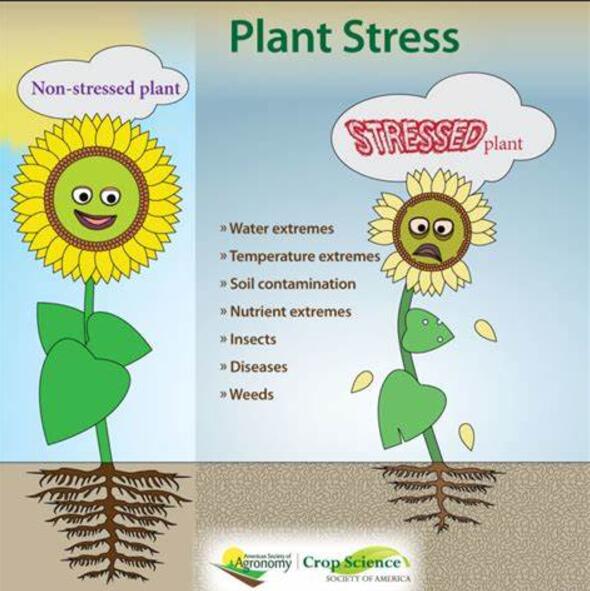通过整合宿主-病原体转录组学揭示scapd1介导的对大丽花黄萎病的抗性机制
IF 6.8
Q1 PLANT SCIENCES
引用次数: 0
摘要
大丽花黄萎病(Verticillium dahliae)是一种毁灭性的血管性枯萎病菌,对全球农业构成重大威胁。了解宿主的抗性机制对于制定有效的控制策略至关重要。本研究研究了ScAPD1在模式植物拟南芥中过度表达时对大丽花病菌抗性的作用。ScAPD1是一种来自嗜极苔藓犬毛癣菌(Syntrichia caninervis)的转录因子。我们采用了综合宿主-病原体转录组学方法(双RNA-seq),以及生理和生化实验。表型分析证实,过表达ScAPD1的转基因拟南芥(SC系)的抗性增强,其特征是疾病症状减轻,真菌生物量显著减少。转录组学分析揭示了宿主反应的显著差异:在野生型(WT)植物中,大丽花弧菌感染严重抑制了光合作用相关途径,而SC系保持了光合能力;这种初级代谢的保存表明scapd1介导的抗性的关键组成部分。emsa表明,ScAPD1直接结合关键光合作用基因PsbQ1和PsbO1的启动子区域,为这种保存的初级代谢提供了直接的机制联系。同时,SC系表现出增强的防御相关途径的激活,包括类黄酮生物合成。感染SC系的大丽花弧菌显示出参与基本代谢过程(例如,核糖体生物发生)和假定的毒力因子的基因的广泛抑制,特别是在感染后期。这些研究结果表明,ScAPD1在植物对dahliae的抗性中发挥着核心作用,它通过实施一个强有力的双管齐下的策略:它直接调节和稳定宿主光合完整性以支持持续的防御反应,同时创造一个不利的细胞内环境,阻碍病原体的代谢适应和毒力。通过揭示这种复杂的双重调控机制,本研究确定了独特的、来自苔藓的ScAPD1作为一个特别有价值的候选基因,用于工程抗黄萎病。本文章由计算机程序翻译,如有差异,请以英文原文为准。
Unraveling ScAPD1-mediated resistance mechanism to Verticillium dahliae through integrated host-pathogen transcriptomics
Verticillium dahliae, a devastating vascular wilt pathogen, poses a significant threat to global agriculture. Understanding host resistance mechanisms is critical for developing effective control strategies. This study investigates the role of ScAPD1, a Soloist transcription factor from the extremophilic moss Syntrichia caninervis, in conferring resistance to V. dahliae when overexpressed in the model plant Arabidopsis thaliana. We employed an integrated host-pathogen transcriptomics approach (dual RNA-seq), alongside physiological and biochemical experiments. Phenotypic analysis confirmed enhanced resistance in transgenic A. thaliana overexpressing ScAPD1 (SC lines), characterized by attenuated disease symptoms and significantly reduced fungal biomass. Transcriptomic analysis revealed a striking divergence in host response: while V. dahliae infection severely suppressed photosynthesis-related pathways in wild-type (WT) plants, SC lines maintained their photosynthetic capacity; this preservation of primary metabolism indicates a key component of ScAPD1-mediated resistance. EMSAs demonstrated that ScAPD1 directly binds to promoter regions of key photosynthesis genes PsbQ1 and PsbO1, providing a direct mechanistic link to this preserved primary metabolism. Concurrently, SC lines exhibited enhanced activation of defense-related pathways, including flavonoid biosynthesis. V. dahliae infecting SC lines displayed widespread suppression of genes involved in essential metabolic processes (e.g., ribosome biogenesis) and putative virulence factors, particularly at later infection stages. These findings indicate that ScAPD1 plays a central role in plant resistance to V. dahliae by implementing a potent, two-pronged strategy: it directly regulates and stabilizes host photosynthetic integrity to support sustained defense responses, while simultaneously creating an unfavorable intracellular environment that hinders pathogen metabolic adaptation and virulence. By revealing this sophisticated, dual regulatory mechanism, this study establishes the unique, moss-derived ScAPD1 as an exceptionally valuable candidate gene for engineering robust Verticillium wilt resistance.
求助全文
通过发布文献求助,成功后即可免费获取论文全文。
去求助
来源期刊

Plant Stress
PLANT SCIENCES-
CiteScore
5.20
自引率
8.00%
发文量
76
审稿时长
63 days
期刊介绍:
The journal Plant Stress deals with plant (or other photoautotrophs, such as algae, cyanobacteria and lichens) responses to abiotic and biotic stress factors that can result in limited growth and productivity. Such responses can be analyzed and described at a physiological, biochemical and molecular level. Experimental approaches/technologies aiming to improve growth and productivity with a potential for downstream validation under stress conditions will also be considered. Both fundamental and applied research manuscripts are welcome, provided that clear mechanistic hypotheses are made and descriptive approaches are avoided. In addition, high-quality review articles will also be considered, provided they follow a critical approach and stimulate thought for future research avenues.
Plant Stress welcomes high-quality manuscripts related (but not limited) to interactions between plants and:
Lack of water (drought) and excess (flooding),
Salinity stress,
Elevated temperature and/or low temperature (chilling and freezing),
Hypoxia and/or anoxia,
Mineral nutrient excess and/or deficiency,
Heavy metals and/or metalloids,
Plant priming (chemical, biological, physiological, nanomaterial, biostimulant) approaches for improved stress protection,
Viral, phytoplasma, bacterial and fungal plant-pathogen interactions.
The journal welcomes basic and applied research articles, as well as review articles and short communications. All submitted manuscripts will be subject to a thorough peer-reviewing process.
 求助内容:
求助内容: 应助结果提醒方式:
应助结果提醒方式:


